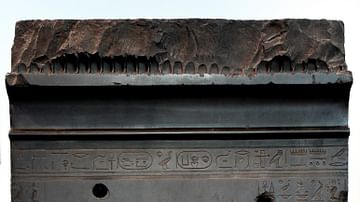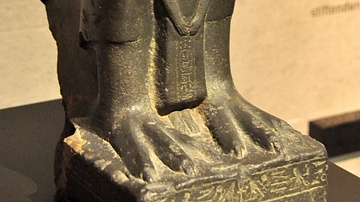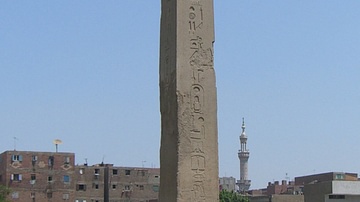Illustration
This detail shows the cobra goddess Wadjyt empowering king Nectanebo I, who is represented by his Horus name and cartouches. A pharaoh had five official names; this panel, shows the most important three. The Horus name identifies the king as the embodiment of Horus, the god of kingship. It is written inside a frame representing a palace, with Horus as a falcon perched on top. Wadjyt, the cobra goddess of Lower Egypt, extends to Horus an emblem of power. The king's throne name and birth name are conventionally encircled by the co-called "cartouches".
This slab enclosed a sacred spot in the temple of Atum, a creator god, Heliopolis. King Nectanebo I is shown kneeling and making offerings. In this scene, he presents a loaf of bread. 30th Dynasty, reign of Nectanebo I, 380-360 BCE. Found in Alexandria, Egypt; originally from the temple of Atum at Heliopolis, Egypt. (The British Museum, London).
About the Author
Cite This Work
APA Style
Amin, O. S. M. (2016, July 24). Detail of the Screen Slab of King Nectanebo I. World History Encyclopedia. Retrieved from https://www.worldhistory.org/image/5371/detail-of-the-screen-slab-of-king-nectanebo-i/
Chicago Style
Amin, Osama Shukir Muhammed. "Detail of the Screen Slab of King Nectanebo I." World History Encyclopedia. Last modified July 24, 2016. https://www.worldhistory.org/image/5371/detail-of-the-screen-slab-of-king-nectanebo-i/.
MLA Style
Amin, Osama Shukir Muhammed. "Detail of the Screen Slab of King Nectanebo I." World History Encyclopedia. World History Encyclopedia, 24 Jul 2016. Web. 15 Apr 2025.








